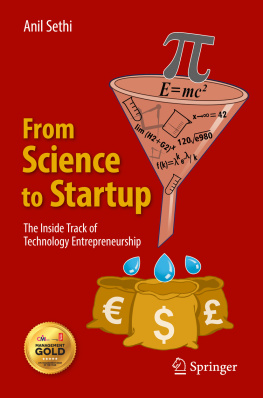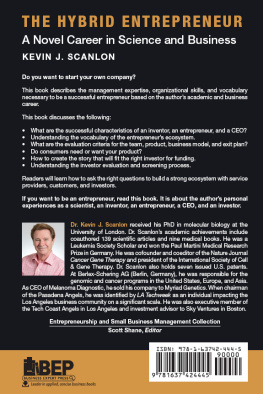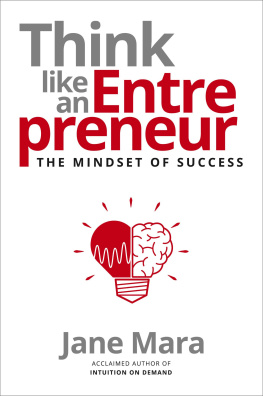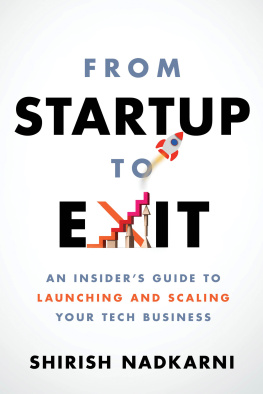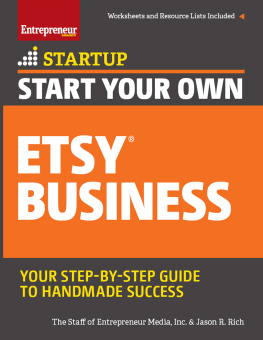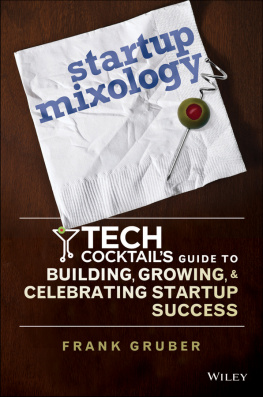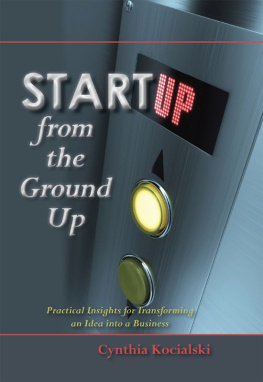1. Prologue
It was the conclusion of my MBA. I was still pretty clueless about what I wanted to do professionally. The one thing I was certain of was that I wanted to do my own thing.
Some of us just hold on to our dreams for longer than others. In fact, as soon as I started working with a big corporate after my MBA, I began saving, knowing fully well that I would be doing my own thing and that it was probably not going to pay - for a while at least. This implied that I would have to live off my savings for a number of years...
Finally, after six long years post-MBA and stints with startups and established corporate giants, I did start my own company, Flisom. Entrepreneurship came with strings attached. Be careful what you wish for, for it does come true if you hold on to it and keep working towards it. The road to being an entrepreneur included, among other things, working for two cups of coffee per day for much much longer than expected.
This book is about the things I wish I had known when I began my journey. This book is really a guide for what not to do and what to be careful about, because they will come and bite you (no, the most important thing is not the business plan or financial projections). It provides you with insights into the real world of entrepreneurship, which will be of interest to you if youre finishing your MBA and want to be an entrepreneur, but have no idea what to do. This book is also relevant for technology people and scientists who want to commercialise their innovations, because it helps them recognise their box and how to think outside it.
So why is all this relevant for you? How about over 200 failures? Team challenges related to managing a group of people who were predominantly scientists or PhDs at a minimum and consequently live in an alternate universe, where the laws of profitability or go-to-market do not apply. Also, a bunch of awards, both on the European and global level. And living to tell the tale.
What a journey it has been. As Winston Churchill once said, If youre going through hell, keep going. On few other journeys would I have expected to bump into the heads of state of Israel and Palestine along the way, get approached by the minister of defence of Iraq, or not be able to respond to Michael Dells interest, because I was occupied elsewhere.
This is my story. The book will help you create yours.
2. Are You Meant to Be an Entrepreneur?
This was in the autumn of 2004. I was with a big company in Switzerland. Post-MBA, I had slightly lost track of exactly where my existence was making an impact in the big scheme of things within the company, other than to adding a touch of cultural diversity in a European environment. Responsibility for autonomous areas and pseudo-entrepreneurship within the corporate environment had whetted my appetite for the real thing. The work was pretty okay as work goes, but it seemed like work. Plus, the spark had been ignited!
Clearly, I wanted to do something of my own. Towards this end, a process of evaluating startup ideas with the clear view of scalability and global impact began. I seemed to always be involved in this processconsciously and otherwise. So, once while dining with a friend, a professor who had been doing research on very efficient flexible solar cells for almost three decades at the Federal Institute of Technology of Zurich, or ETH, another thought process appeared. Incidentally, ETH happens to be the university that got Einstein as a professor just over 120 years ago, making me conclude that the well of knowledge runs pretty deep here.
This professor friend mentioned that he was considering commercialising his technology. He also happened to elaborate upon his rather brief meeting with an investor, who had thrown his documents in the dustbin before thanking him for his time. Now the Prof. was a respectable scientist and not given to frivolous behaviour. In fact, he had held the world record for the highest efficiency for several years. Efficiency, in this regard, means the percentage of light that is converted into electricity. On inquiring what exactly it was that he had given to the investor, he said he had taken the PhD thesis of one of his students.
Realisation dawned immediately! This authority in the field of technical education was far, far away from reality! Instead of making a business plan and a slick presentation to the investor in the language the investor understood, he had buried the investor under a PhD thesis. Instead of telling the investor where the technology could make money, the professor had told the investor what areas could be interesting for PhD research.
Here was one professor who was in desperate need of some help, I thought. And instead of pointing him to a good doctor, yours truly decided to help him to develop the business plan. As I began to study the market, the excitement of being able to bring an amazing technology to the market began to mount rather quickly. However, the task ahead seemed challenging, with no terms of certainty; so I continued to try and find really good reasons why I should get involved with this. At this time, there was apparently one reasonthe spark that wanted to flame up into something different, something big!
But that wasnt reason enough to let go of a good thinga job with a neat monthly salary at the end of each month. Still, never say no to opportunityand going by that, I delved a little further. There was no team as the professor wanted to continue working in the laboratory. Risking his salary for something with world-impacting potential was a distant and far-removed concept he was unwilling to bet on. Eventually, after many sessions of speaking to him, cajoling him, he was convinced enough to get his students to consider joining the team. He had been made to realise that investors were not likely to give money to a business driver who was doing this on weekends and a professor who planned to continue working full time in the university.
This was in late 2004. There seemed to be no business rationale for me to get involved with this technology. The day after Christmas, I heard news about a wave that had lashed out and, in its wake, had resulted in 200 people losing their lives. Within one hour the estimate had been increased to over 2000. The next day it seemed that over 50,000 people had lost their lives. This was now being reported as the tsunami in Banda Ache in Indonesia.
In the coming days, the news only got worse. Over 250,000 people had perished. Many of these people were children and elderly people. Most of them perished not because of the wave itself, but because of lack of access to clean water and medicine in the first 3 days after the tsunami. International organisations like the UN tried to get medicine and potable water to those in need. The problem however was that all communication had been wiped out.
If only the professors flexible solar solution had been available, a roll weighing 2.5 kg would have generated enough electricity to purify water for 1000 people per day. It could perhaps have saved many lives. This really was the point when I decided that I was going to drive the commercialisation of the flexible solar cell technology. For someone who had spent his career in consulting for clients to look for reasonable solutions, this was the most illogical of reasons for a life-changing decision. But it was no different from most entrepreneurs who start off simply because they believe. The would-be entrepreneurs who wait till all the risks are mitigated often become insurance agents. As Yoda said to Luke Skywalker, Do. Or do not. There is no try.

